カンフーの基本:構え
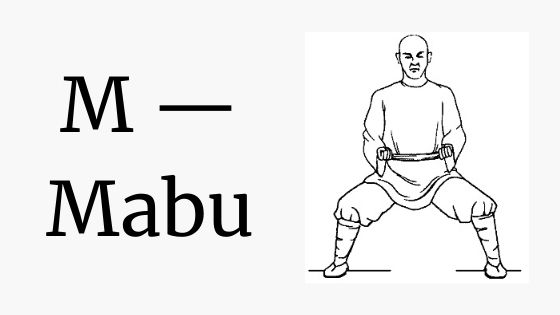
Stances are the basic part of all Chinese martial arts, the foundation for further training in traditional kung fu. By the way a student approaches the development of stances, the master checks his zeal and desire for a truly deep immersion in the study of wushu.
The Chinese name for the stance is “bu” (步), one of the translations: “step”.
This variant of interpretation perfectly reflects the peculiarity of performing kung-fu stances, emphasizing that it is a statics tending to move into dynamics. The seemingly contradictory requirements to the technique of their performance become clear:
- stability in the moment
- the ability to quickly change position, while maintaining balance and technique.
Begin mastering the stances by training to stand still, then practice the transitions from one to another, gradually accelerating. “To learn how to walk, you must first learn how to stand on feet”, the Chinese say.
The followers of kung fu believe that even if a person has not yet mastered the fighting taolu, as required by the canons, but has mastered stable stances and positions, this is a third of the victory in the battle with the opponent.
The execution technique seems quite simple, but they are all very energy intensive and effectively develop internal strength. Muscle fibers become elastic, joints are strengthened, qi energy flows freely, and breathing helps guide it to the right place.
There are several basic stances common to sports and traditional kung fu. In total, there are more than a hundred, while the versions of different schools and styles have noticeable differences.
Shaolin Kung Fu Stances
In the article – the names and techniques of performing key pillars characteristic of northern Shaolin kung fu.
Mabu stance
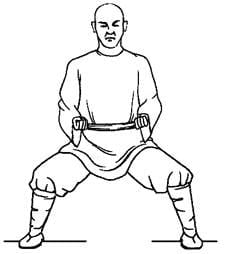
The most important stand, often called the base. It is found in all styles of modern and traditional Wushu. In performing the tricks, the mabu is seen as an intermediate position from which the student can quickly move to any other.
The legs are slightly wider than the shoulders, a fixed distance between them is determined by the size of your leg and is exactly 5 foot lengths. The feet are parallel, the knees are bent at an angle of 90 degrees and slightly turned outward, the back is straight, the lower back is curved. The weight of the body is distributed between the supports, which ensures stability, the legs, as it were, “grow” into the ground. With a well-mastered and well-developed mabu, a person will withstand even after the enemy’s bottom hook.
Mabu is used to increase knee strength, improve concentration and breathing.
Before starting to study the switch stance one to another and mastering formal techniques (taolu), students should be able to hold the mabu for at least 5 minutes, any master will not let him go further into training until the practitioner acquires stability in the mabu stance.
The Shaolin monks themselves hold a mabг for 30 minutes or more, some students achieve the same success.
Gongbu Stance
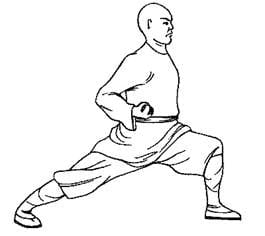
The left leg in front (left gongbu), at a distance of 5 feet, is bent. Right – absolutely straight, feet on the width of the pelvis for greater stability. The socks of both legs are slightly turned inward. The emphasis (center of gravity) is 70% shifted to the leg standing in front. Gongbu is also practiced on the other foot, the standing time on each is 2 minutes.
You can go to gongbu from the mabu by turning the pelvis. Resting on the ground and filling it with force, we transfer all the power to the pelvis and blast the body, leaning on the hind leg and at the same time straightening it with a sharp movement. When turning to the left, the right foot “shoots”, while turning to the right – the left leg.
Gongbu is often used to go on the attack. Its structure is such that a practitioner can punch with his left foot with great strength, steadily resting on his right. In addition, from this stance you can instantly strike and right
The False, or “Empty Step” stance called Xubu
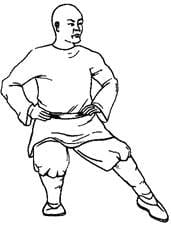
Lean on your right foot. Bring the left foot forward and touch the toe as far as possible, slightly lifting the heel on the left side up. All the weight is on the right foot. The distance between knees is the student’s (or master’s) fist.
The stand is effective for quick punches with the left foot, often used for evasive actions, transitions between combat positions. It contains the softness and hidden power by which the Shaolin monks have always guessed. An empty step also trains the stand on one leg. In the event of an opponent’s strike or taking an “empty leg”, balance is maintained.
Xubu is great for strengthening of the hips.
Stance “Lowered Step” Pubu
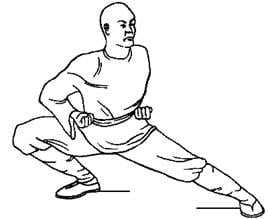
The legs are widely spaced, the right is bent all the way, the heel is on the ground and touches the buttocks, the knee and toe are deployed to the right. The straight left leg is pulled to the side and almost lies on the ground, its heel touches the ground. The feet are parallel, the body is slightly inclined forward, but the head does not fall below the pelvis.
In the pubu pose can move from the right gongbu, turning the body to the left and transferring the weight on the right leg. Pubu helps to strengthen the back, stretching the legs and lower back.
This stance is versatile for both attack and defense against high jump attacks. It was while in the pubu that the martial artist Woo Song killed the tiger jumping on him during the Song Dynasty.
Xiebu (歇步) Holiday Counter
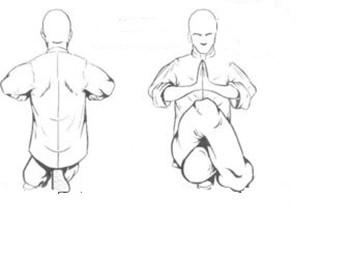
Your legs are crossed and bent at the knees. Left foot in front, heel on the ground, you sit on the right shin, right knee pressed against the left shin on the outside. Crossed legs protect the groin and prepare for a side kick or departure from an opponent standing to the side.
Twisted stands develop flexibility and promote the free flow of qi along the spine.
Xiebu is the basis for a number of techniques containing a fast lateral movement in the chain. Xiebu training practices a lightning-fast “dive” to the ground to evade an attack and get ready to strike a hand from below into the opponent’s open body.
Stance of “Lohan sleeps” (罗汉睡觉)
Deeper than siebu, the thigh and lower leg of the left leg are pressed to the ground, the right is brought over the left, her foot touches the ground. You can see this stand during the execution of the Lohan complex, there it will be called Lohan sleeps.
It is used in battle in much the same way as siebu – for quick movements and withdrawals to the side.
Zuopan is good for developing the mobility of the hip joints.
Stand on one leg Dulibu
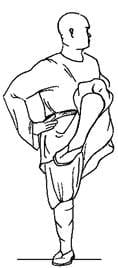
The right leg is the support for the entire stance , the left knee is bent and raised above the level of the navel. Left foot covers right knee, toe extended down
This is a very effective stable attacking stance, basic for making attacks at medium and high level. In defense it helps to reflect low and medium shots.
Trains the vestibular apparatus and concentration of thought.
Binbu Foot Stand

Standing body position, socks together, knees bent, shoulders lowered, back straight. Even breathing, calm thoughts.
Binbu is often the beginning and the end in exercise complexes and is used in the greeting ritual.
The training of each stance begins with 20 seconds of standing on each leg, the goal is to stand up to two minutes. An exception – the mabu- it is necessary to be free in it for as long as possible, at least five minutes. It does not require a change of support, since the weight in this stance is initially evenly distributed.
When performing taolu and in positions, it is important to hold the hands correctly, everything is interconnected: form, posture, inner attitude, look, purpose.
Hand positions
(Art Work: Guy Robinson of Atlanta, Georgia)
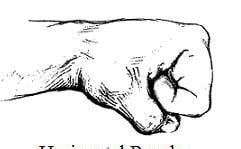
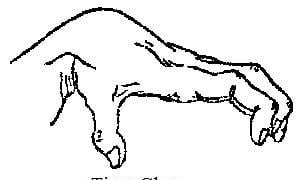
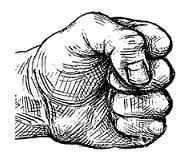
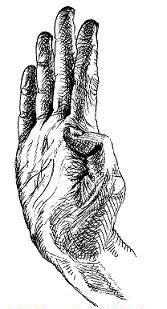
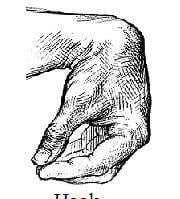
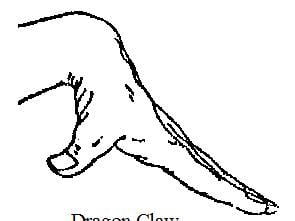
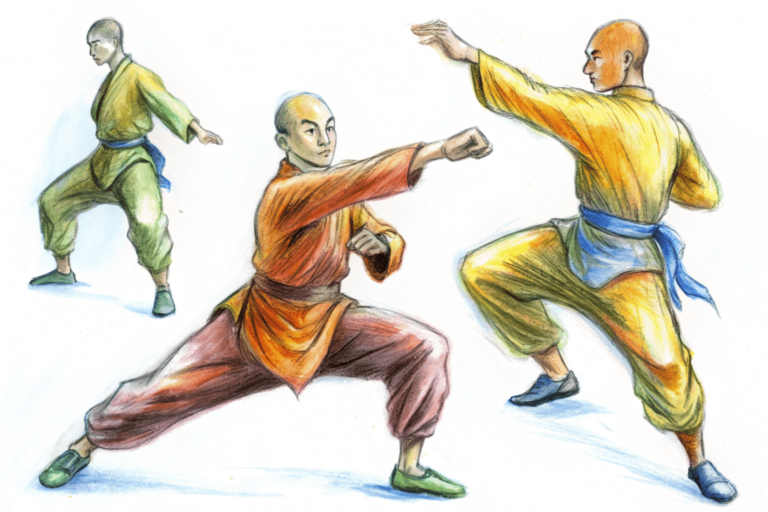
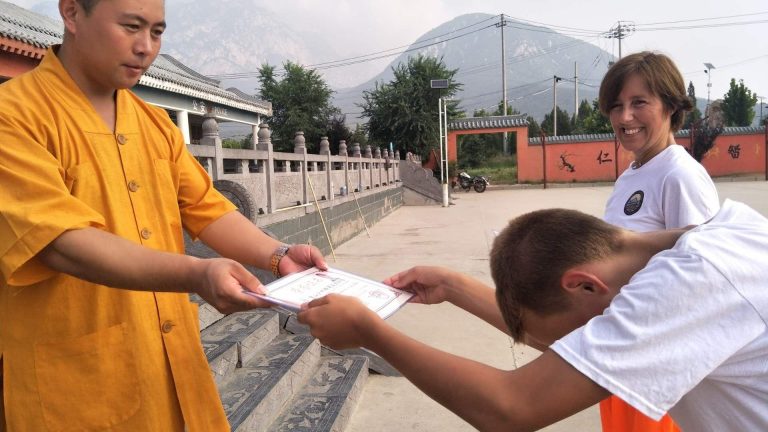
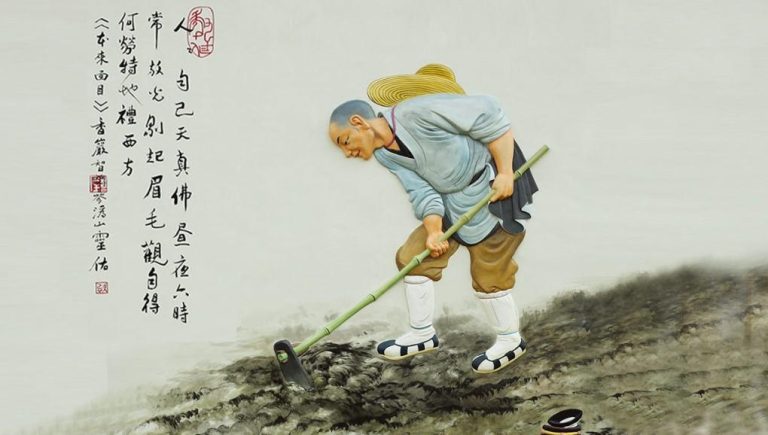
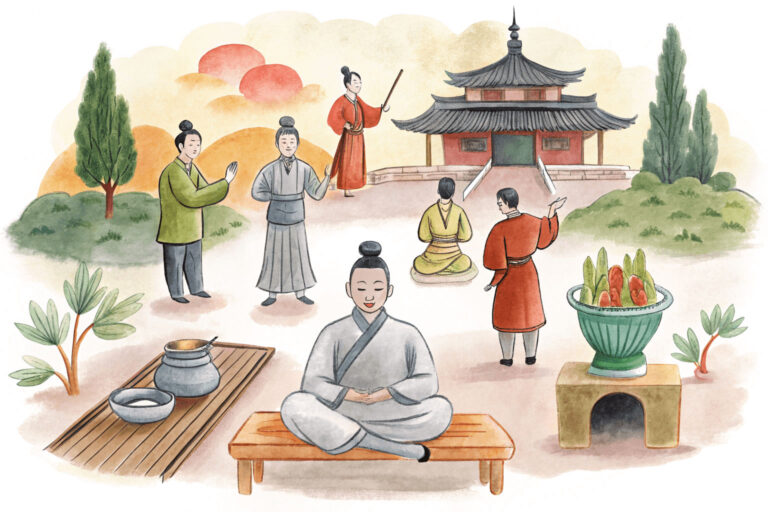
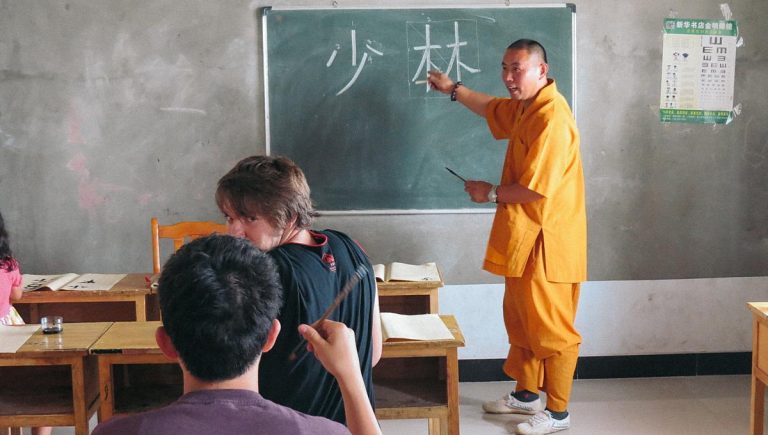

Nice and very educative post.
Thank you. Let me know what you looking for next?
Pour un débutant comme moi c’est très clair merci beaucoup
You are welcome
トライしたい
カンフーを習いたい
ぜひご参加ください。2025年3月1日からスタートします。
[email protected]